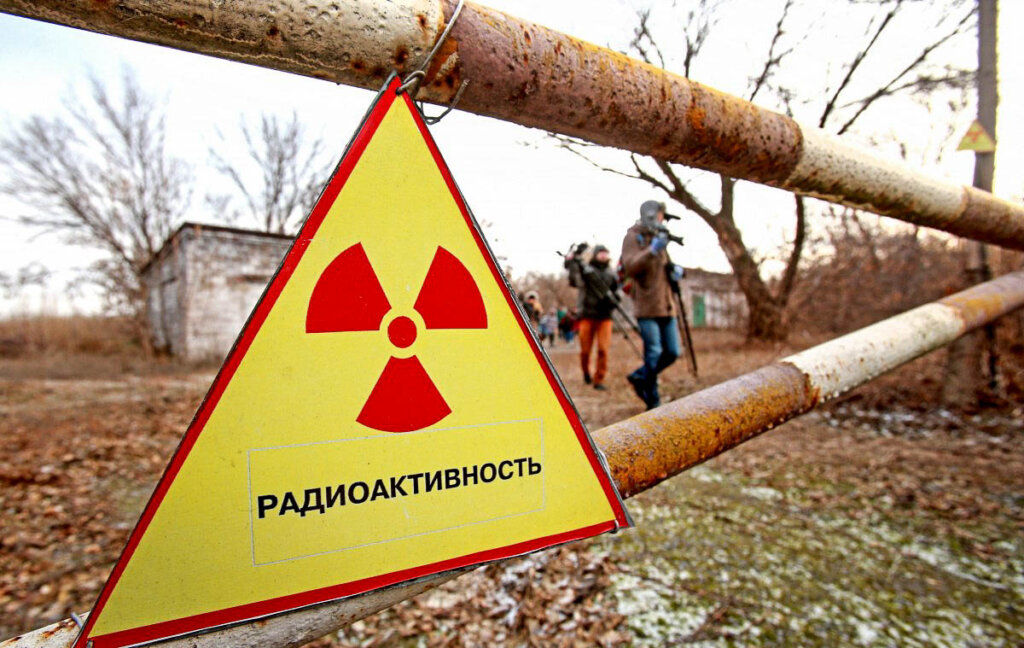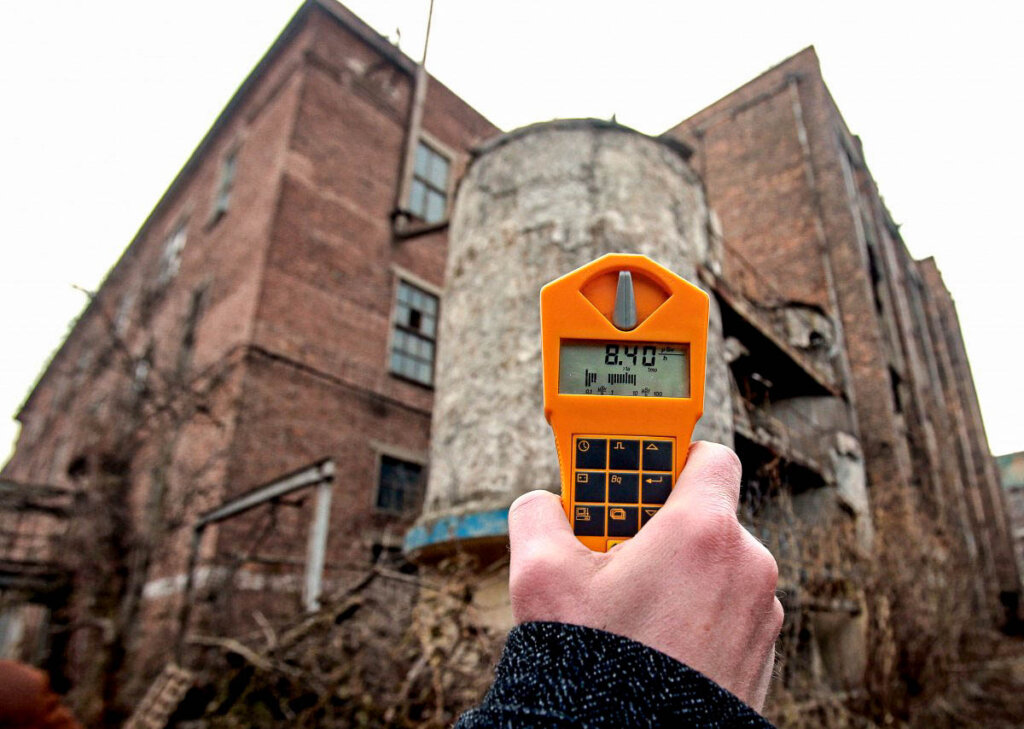On the outskirts of Kamianske, a city of 236,000 people 450 kilometers southeast of Kyiv, lies the ruin of one of the Soviet Union’s largest uranium processing centers, the Prydniprovsky Chemical Factory.
Kamianske residents live next to the vast 135,000 square meter patch of land littered with ominous signs warning of high radiation levels.
Little has changed since the first project to decontaminate the site began 18 years ago. Despite more than $12 million in foreign aid injected into a rehabilitation program and local activism, pollution lingers.
Despite repeated declarations of support for decontamination by the government, fresh new management on the ground and foreign investment, work on the site remains at a standstill. This inaction may prove environmentally disastrous.
State-owned DP Barrier undertakes monitoring, decontamination, and rehabilitation of staggering 42 million tons of uranium processing waste on a shoestring budget.
The company hasn’t received any viable funding from the government since 2018, and the project ground to a halt following a 2016 Cabinet of Ministers decree which prohibits the funding of new state programs.
DP Barrier is currently over $1.2 million in debt and subject to 158 open legal cases, most of which relate to unpaid employee wages. Most employees are working without salaries or have left the company.
These debts have crippled DP Barrier’s ability to do its job. Newly appointed DP Barrier director, Yuriy Rets, told the Kyiv Post that his company had given up on waiting for funds.
“We no longer hope for additional funding. As of today, the enterprise cannot receive the allocated funding determined in the state program due to arrested accounts,” Rets wrote.

Radiation hazard signs on the grounds of the former Pridneprovsky Chemical Plant. According to reports, 42 million tons of uranium processing waste in tailings lay untouched on the site. (UNIAN)
Lack of responsibility
At the peak of the plant’s production, between 1947–1972, almost 65% of all Soviet uranium ore was processed at this site.
Studies show that uranium and radium have penetrated the soil, and if nothing is done, radiation will enter neighboring bodies of water, carrying pollution all the way to Ukraine’s most vital lifeline — the Dnipro River.
Norwegian environmental consultancy Bellona recorded up to 4.4 microsieverts per hour on the factory ground in 2020, enough to cause severe radiation sickness.
The Ministry of Environmental Protection, the Ministry of Energy, and the State Nuclear Regulatory all refused to comment or simply delegated responsibility to other ministries.
Bellona’s 2020 report notes that the government’s current programs completely overlook the main tool for decontamination, DP Barrier.
Olexi Pasyuk, deputy director of ecological nonprofit EcoAction, stated the government had “no feeling of emergency” when budgeting for these projects.
“In terms of financing, I think the state regularly underfunds these issues,” Paysuk added.

A Geiger counter records elevated levels of radiation on the grounds of the Pridneprovksy Chemical Plant on Dec. 1, 2016. (UNIAN)
Dangerous underfunding
According to the director, 84% of the company’s debts relate to land tax arrears, which they ought to be exempt from as a radioactive disaster area. Chronic underfunding has made it impossible for the company to meet its minimum requirements, Rets said.
Tatiana Lavrova, the former coordinator and executor of the implementation of radiation monitoring programs at the site in 2005– 2012 and 2016–2017 noted that the project’s current status is ‘unsatisfactory.”
“At the moment, the state-owned enterprise Barrier, the operator of the site, is in an egregious financial condition,” Lavrova wrote.
DP Barrier does not have the money or staff to create observation wells to monitor the impact of uranium objects on the environment, despite what the company’s reports describe as “a halo of radiation emitting from the site.”
While work on the project may have stopped, the risk of pollution has not.
DP Barrier’s report published in 2021 said that it cannot monitor the impact of radiation on the health of the local population. According to DP Barrier’s reports and Rets, a lack of action at the site is likely to lead to increased public health risks.
Without funding, Rets says that the site “remains an area of increased danger” to the public.
Rets says that the most considerable risk to residents comes from radioactive dust from the site’s most radioactive tailing areas.
The locals aren’t the only ones in danger. The Dnipro tailing dumps, which contain nearly 12 million tons of industrial waste containing radioactive material, sit on the bank of the Dnipro River, Rets said.
Natural disasters caused by global warming risk overcoming the man-made barriers at the site, washing waste into the river and spreading it to a much wider area, Rets said.
This means that the company and the government cannot fully understand the impact of radiation from the former grounds of the factory on the local population.
The project survives thanks to funding from a three-phased rehabilitation plan with the European Commission’s Instrument for Nuclear Safety Cooperation (INSC).
The European Commission spent almost $6 million on the first two phases of a European Union support program and envisaged providing a further $6.77 million towards a third phase of the project.
According to the European Commission, European funds were intended to provide “institutional support” for DP Barrier, but it’s not enough, according to Rets and Paysuk.
Paysuk said the Prydniprovksy plant is just the tip of the pollution iceberg in the nuclear waste industry, and deplored the lack of attention around the site, compared to Chornobyl, the site of the worst nuclear accident in mankind’s history.
“Priority and funding always go to Chornobyl,” Paysuk said.
